Today, Maury County has an abundance of beautiful and historic sites. In fact, there is such an abundance of historic sites that Maury County has been dubbed the “Antebellum Homes Capital of Tennessee.” But, for all of the sites still standing, many more have been lost to the ages. Fires, neglect, mother nature, indifference, and “progress” have all played a role in the demise of local landmarks.
Unfortunately, this is only a partial listing of sites Columbia has lost:
Andrews School
The Columbia Conference College was established in 1850 by the Methodist Episcopal Church on the site of the old Columbia Female Seminary. The three-story brick structure known as Corinthian Hall was built shortly after the founding of the college, perhaps between 1851 and 1852.
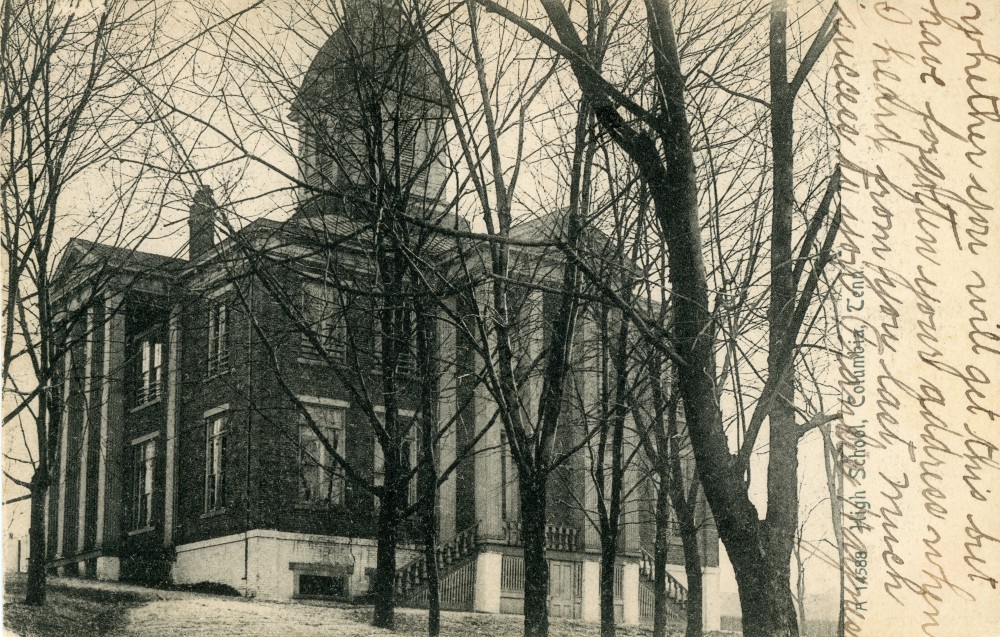
Postcard of “Andrews School,” the old Corinthian Hall, postmarked 1909.
The Columbia Conference College was a church-run girls school. There was already such a school in Columbia, the Columbia Female Institute operated by the Episcopal Church. When Rev. Smith founded the Athenaeum in 1852, that made three all-girl schools in Columbia. The Columbia Conference College could not compete and ceased to operate prior to the Civil War.
During the war, most of the buildings that comprised the campus of the school were burned. These were mostly frame structures. The brick building, Corinthian Hall, survived, and was used as a hospital during much of the war by both armies.
After the war, old Corinthian Hall stood abandoned on the east side of Columbia. Many folks claimed the building was haunted, as ghostly lights could be seen floating from window-to-window during the night. It was not ghosts, but something more terrifying, as the Ku Klux Klan was using this as a meeting place in the night.
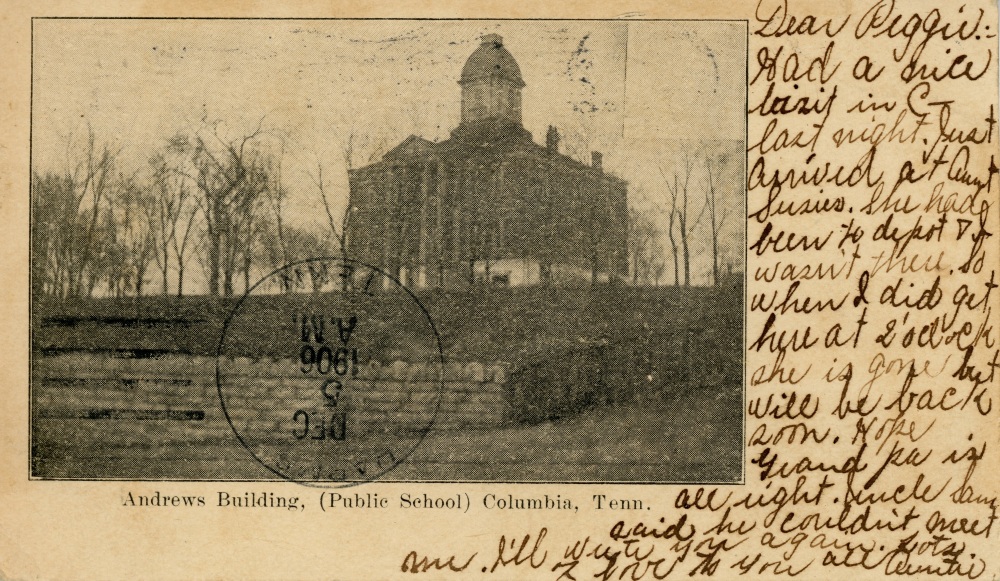
“Andrews School” postmarked 1906.
In 1873, two of Rev. Smith’s sons (William and Frank) purchased the property to start an all-male high school after their older brother, Robert, inherited the Athenaeum school for girls. The Smith Brothers sold their all-male school to the City of Columbia in 1881.
The city reopened the building as Andrews School. It was the city’s first public school.
Andrews School, the old Corinthian Hall, was demolished in 1988. All that remains of the school is the stone fence, erected around the property in 1896.
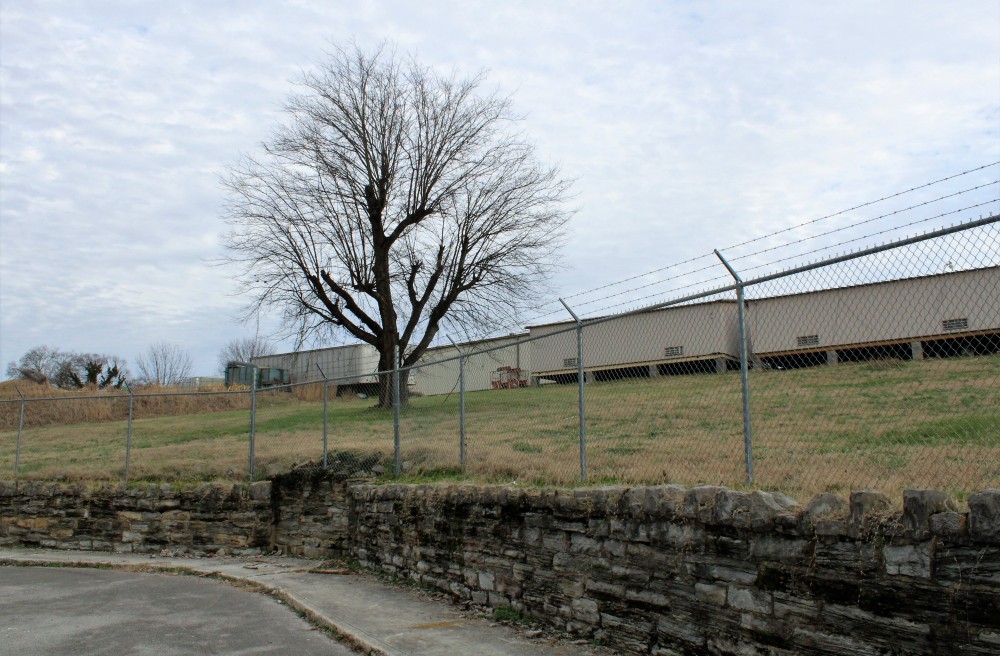
The Andrews School site today. The Board of Education’s Maintenance Building is now on this site. The old stone fence remains.
James K. Polk’s Other Home
When the “Polk Home” is mentioned in Columbia, most folks think about the home on the southwest corner of West Seventh and High Street. This home was built by the President’s father, Samuel, in 1816.
There was another Polk Home, though. This other home was built by James K. Polk shortly after his marriage to Sarah Childress in 1824. Over the years the Polks called the place home, two Presidents were entertained there: Andrew Jackson and Martin Van Buren. This, too, was where James K. Polk lived when elected President.

Postmarked in 1911, this postcard claims to be the “home of James K. Polk when elected President of the United States.”
But, what happened to this house? Well, what happened is disputed. Some claim the home was razed in 1872 by Dr. A L. Pillow. Others claim Dr. Pillow only remodeled and added to the home.
Despite what Dr. Pillow did, the people of Columbia continued to call this the home of President Polk. As a matter of fact, when Cordelia Pillow sold the home to Katherine Regen, the deed claimed this was “the old Polk home.”
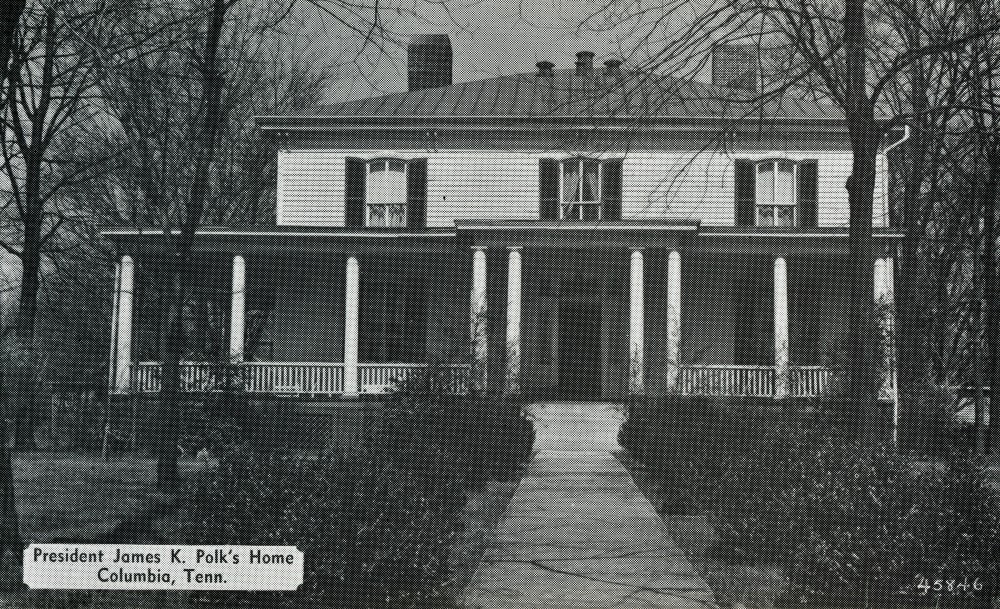
In addition to this evidence, in 1896, Caroline O. Nicholson alluded to the fact that this was James K. Polk’s Columbia home when writing her memoirs. The Century Review of Maury County in 1906 made no bones about it, stating that the Pillow Home was the past residence of the former President and First Lady. Postcards of the early 20th century were printed, as well, claiming this to the be the home of President Polk.
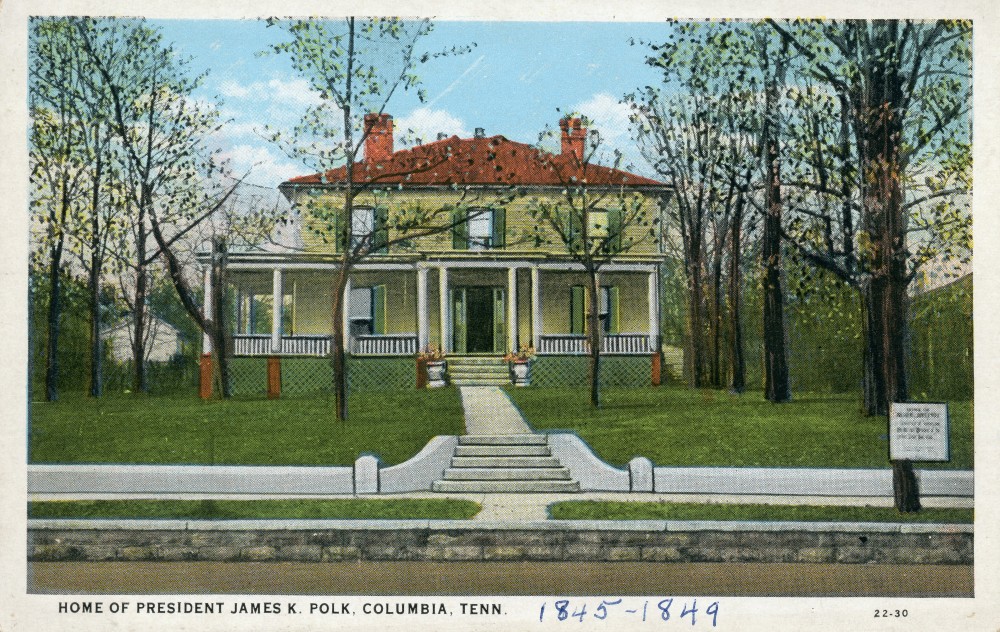
Were all of these sources wrong? Did Dr. Pillow actually raze the home of a President in 1872? The newspaper accounts of 1872 state that he did. These articles created enough doubt and allowed the site to be razed in the 1960s. The vacant lot where the home once stood is now a parking lot for Oakes & Nichols Funeral Home.
The steps that once led from the sidewalk to the front porch can still be seen on West Seventh Street.

The Bethel House Hotel
On the northwest corner of Garden and West Seventh Street once stood the finest hotel Columbia has ever known, the Bethell House. Built by William Decatur Bethell in 1882, the Bethell House Hotel was the crown jewel of Downtown Columbia. As part of the building, on the western side, was the Opera House, later known as the Princess Theatre.
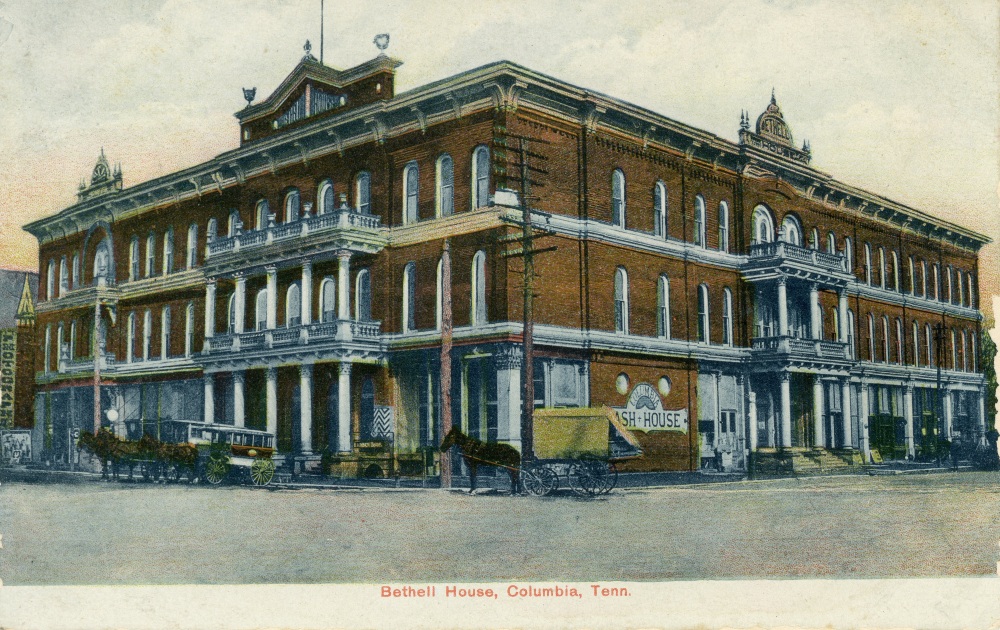
This three-story building featured stores, a theater, and a restaurant on the first floor. A grand ballroom was on the second floor, as was access to the private boxes of the Opera House. The third floor was made up entirely of guest rooms, of which there were sixty first-class ones throughout the hotel.
Horse-drawn omnibuses ran between the hotel and the train depot throughout the day, so that guests could go straight from the train to the hotel or vice-versa.
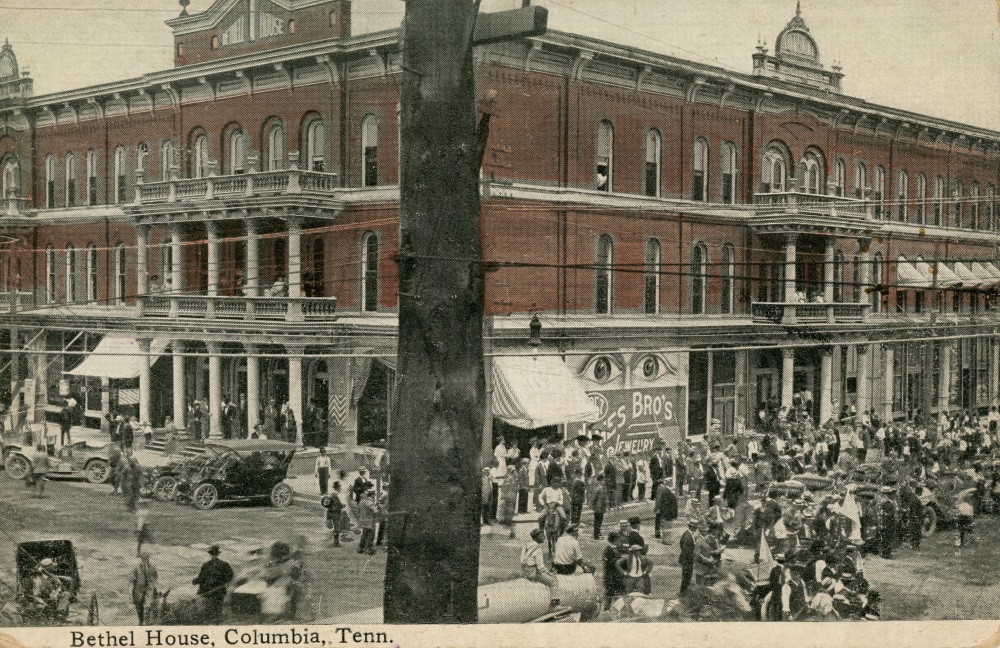
In 1930, the Opera House became the Princess Theatre and would later be remodeled to take on a more Art Deco look inside. The hotel and Princess Theatre were truly the cultural hub of Downtown Columbia. Schools, dance classes, and local drama clubs all used the stage of the theater for their shows. Saturdays for most kids meant a day of movies and popcorn at the Princess.
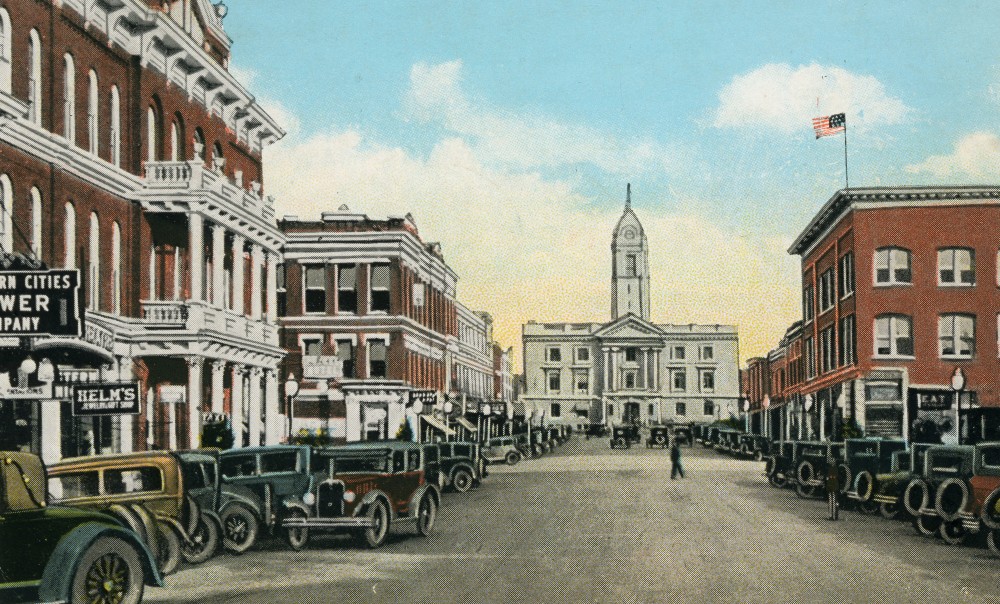
For some unknown reason, the last “l” from Bethell was dropped, so that the hotel became known as the Bethel House. Despite this change, the signs on top of the hotel were never changed. They retained the two-“l” spelling of Bethell until the end.
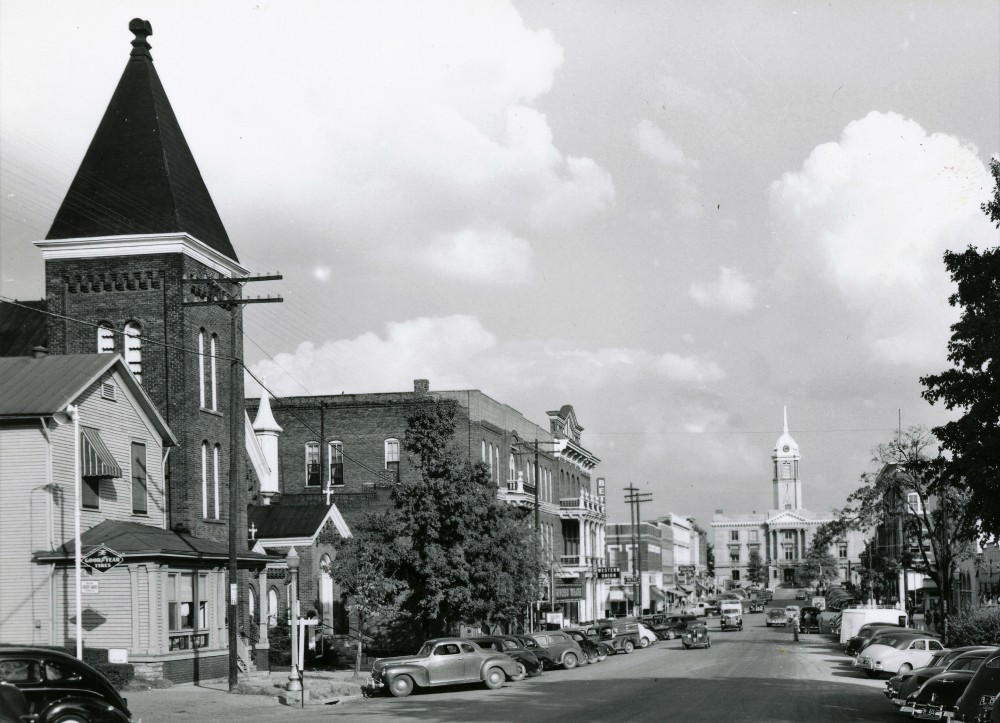
That end came during the night of November 27, 1949. During this night and into the morning of November 28th, the Bethel House Hotel and Princess Theatre burned.
First Tennessee Bank and its parking lot now sit where the Bethel House once stood.

Columbia Female Institute
The Episcopal Diocese began construction of their Columbia school in 1835. After several delays, Rev. Franklin Gillette Smith finished and opened the Columbia Female Institute in 1837.
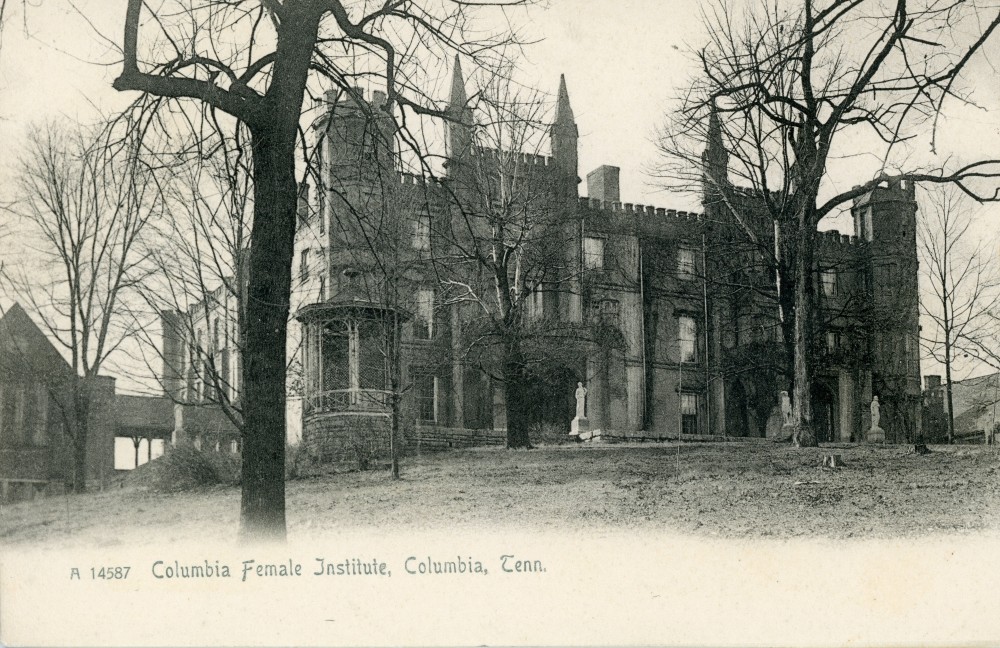
For 95 years, school was held in the castle-like building along West Seventh Street in Columbia. An advertising pamphlet from 1837 reads:
The general effect of the exterior is imposing, from its magnitude and its just proportions.
The selection and execution of the decorative parts of the façade exhibit the classical taste of the architects and their judicious adherence to the established principles of Gothic architecture. The front of the building—the exposure of which is towards the north—is one hundred and twenty feet long, including the Octagonal Towers at the corners, eleven feet in diameter, which rise one story above the building and terminate in turrets. The corners on the back side are finished with Martello towers, five feet in diameter, which rise above the parapet walls and are also turreted. The whole effect of the building is improved by its fine basement story (not shown at all in our engraving) which is separated from the first story by an elegant band of hewn stone, the material employed also in the flights of steps leading up into the porticos. The width of the porticos is twenty-one feet, and their projection from the front wall, fifteen feet—the front and side openings being pointed arches, and the massive piers with buttresses in front and on one side, terminating in elegant lanterns. The walls of the porticos and the whole of the façade are turreted…
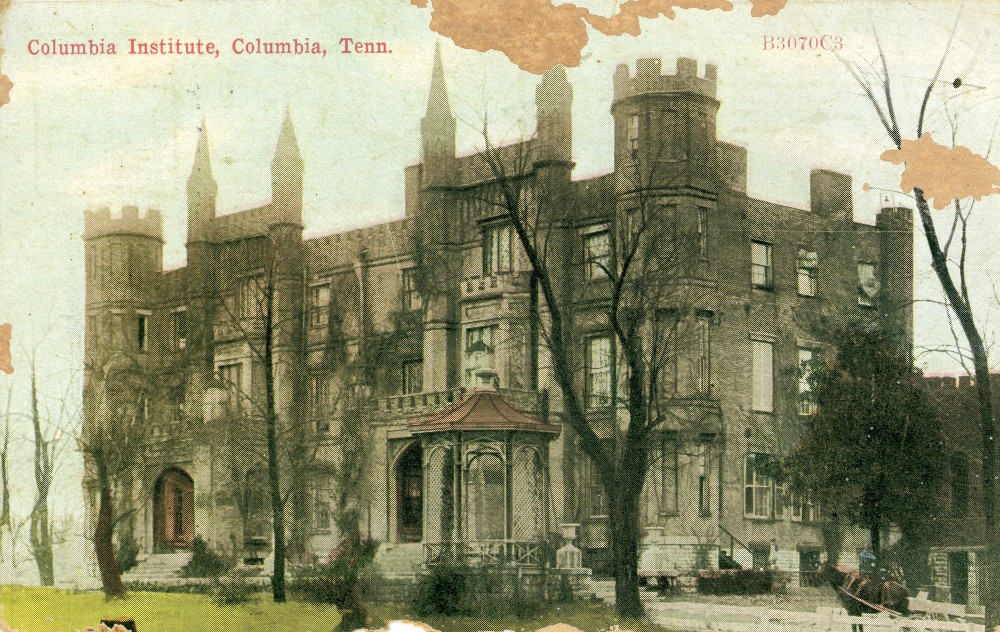
The Columbia Female Institute closed in 1932. After which, the building was used for a variety of purposes. It was being used as storage for the school system when it burned in 1959. On the night of Friday the 13th, March 1959, the school caught fire. It was a complete loss.
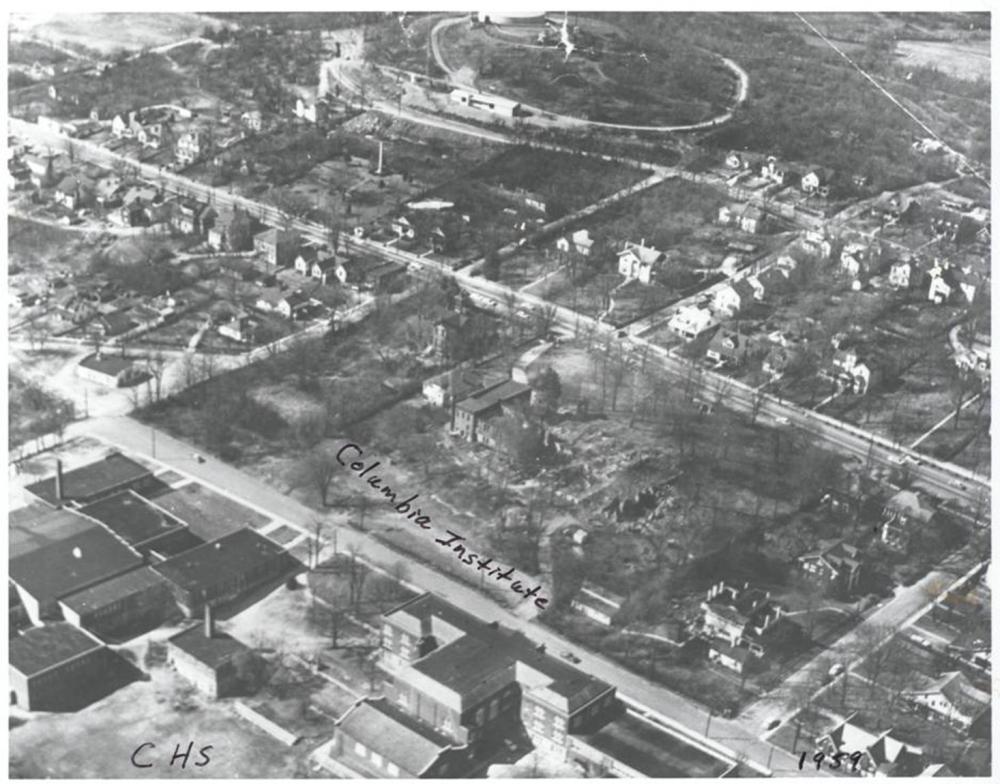
An aerial photo showing the aftermath of the Columbia Female Institute Fire.
Today, Columbia Plaza shopping center and the U.S. Post Office sit on the site of the old girls school.
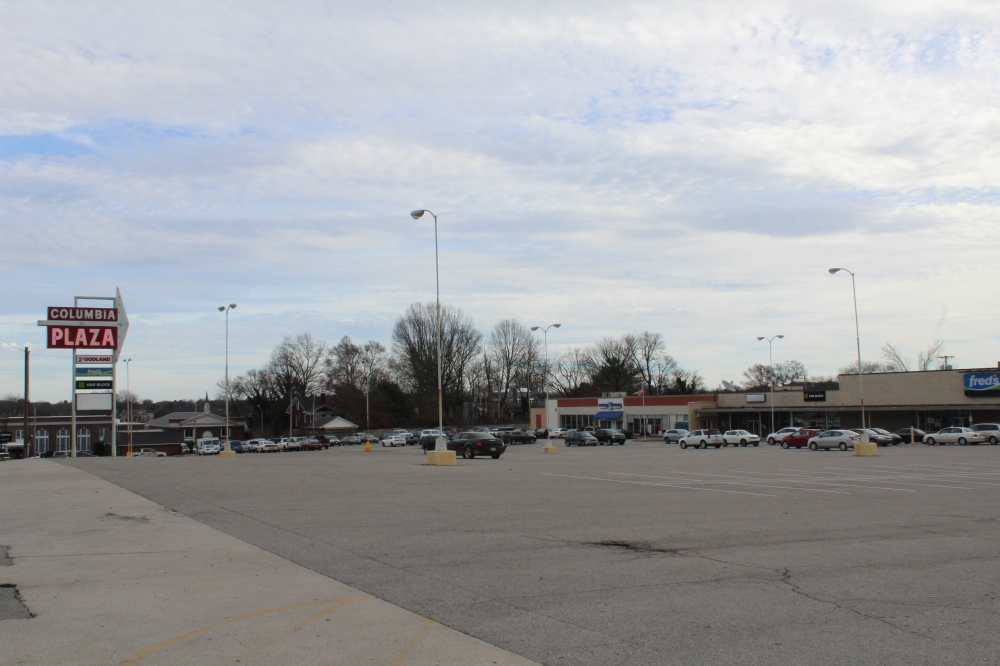
If you’d like to read more about the school, visit: https://historicmaurycounty.com/2017/12/18/the-columbia-female-institute/
The Athenaeum Campus
Rev. Franklin Gillette Smith left the Columbia Female Institute in 1852 and started his own school. He named his school the Athenaeum.
This school was located literally next door to the Institute, just to the southeast.
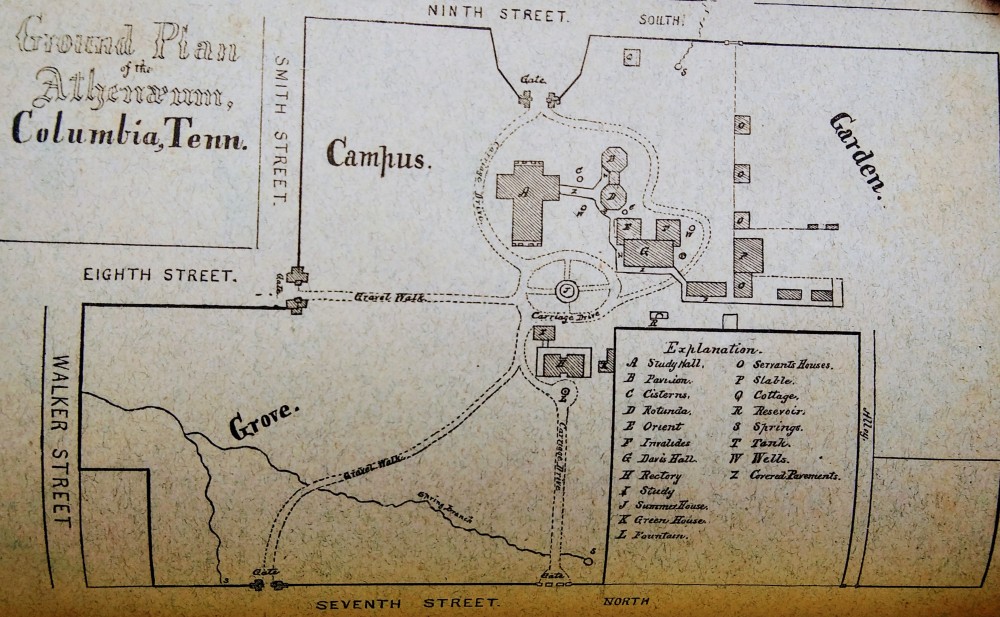
The large Athenaeum campus. The Columbia Female Institute was located where the key, or “Explanation” is on the map.
The most prominent building on the Athenaeum campus was the Study Hall. This white building was fronted on two sides (north and south) by four-columned porticoes.
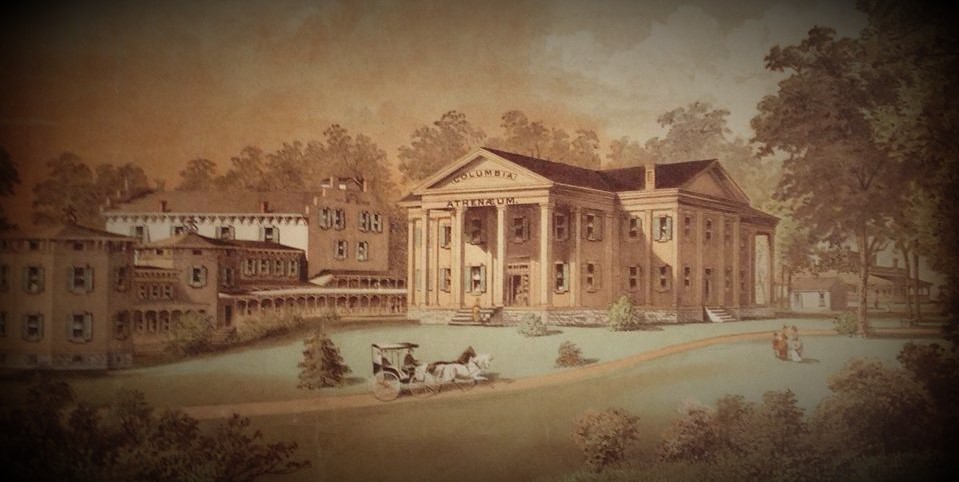
When the Smith family sold the campus to the City of Columbia in 1904, the city retained the old Study Hall building as a public school.
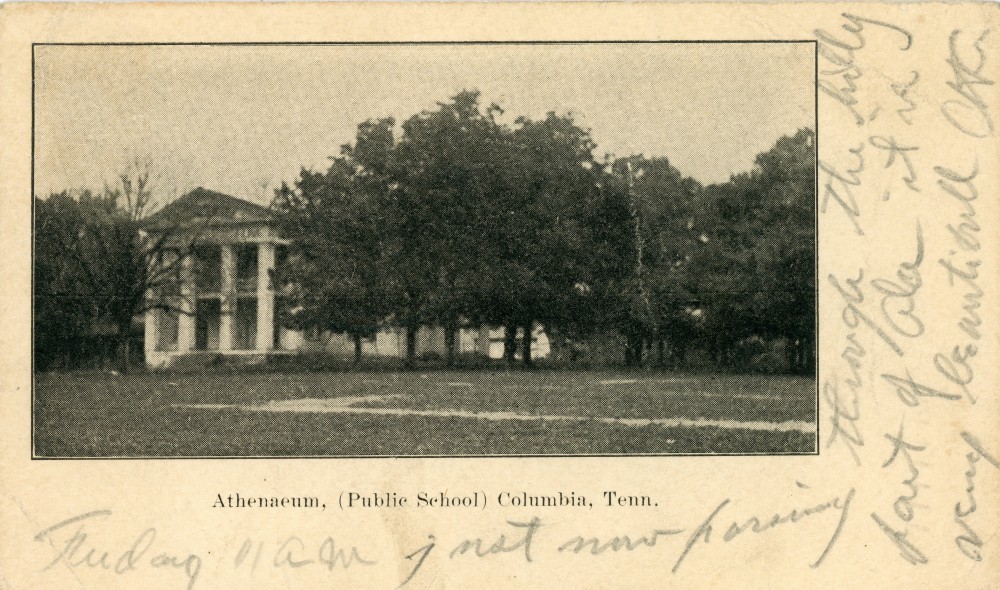
Later, in 1915, the city would tear down this building to build the first Central High School on this location.

Just to the west of where Central High School was built, the Tennessee Children’s Home was erected in 1909. This building would be razed in the 1930s to build Whitthorne Middle School.
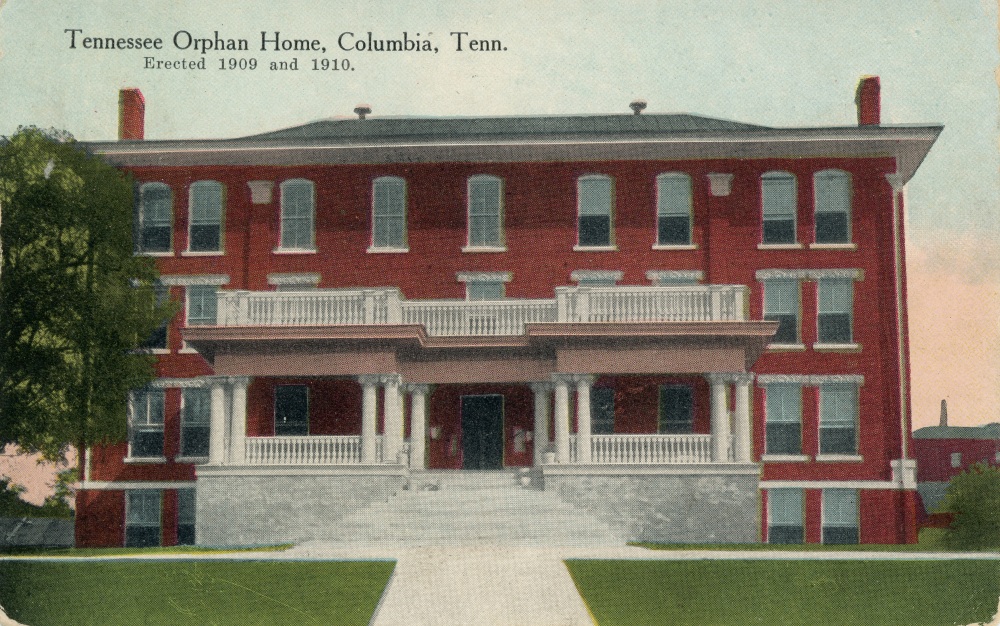
On the most southeastern portion of the old Athenaeum campus, King’s Daughters Hospital would be built. The King’s Daughters school is now on this location.
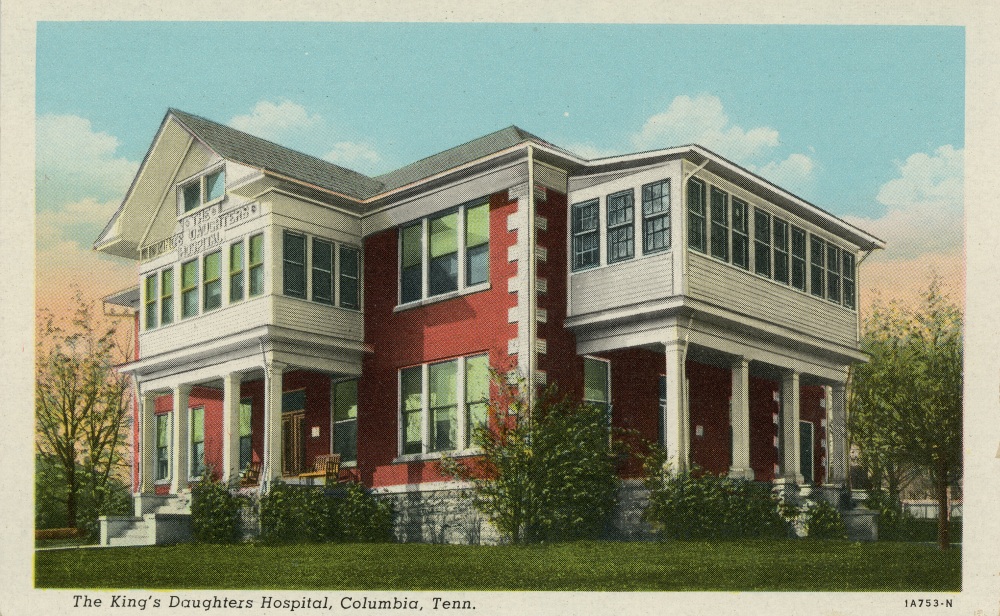
The are several homes on the Athenaeum’s historic campus today. King’s Daughters School and the Maury County Board of Education are also on the property today. Thanks to these two entities, the property continues to have ties to education, a distinction held since 1852.
The rectory of the Athenaeum remains as a historic site and museum.
-Adam Southern
Most of the images in this post are postcards from the collection of Adam Southern. If you’d like to see more, consider a copy of his new book, Greetings from Maury County, Tennessee.

Thank you! I love this historical look at Columbia and at some of its buildings.
LikeLike
Enjoyed all historic info
LikeLike
Loved seeing “Old Columbia”. I had always heard of the Bethell House, but could never fathom the grandeur of such a building.
LikeLike
I thought that Columbia had to have more outstanding building that use to stand can’t understand why they weren’t taken care of ! being they were so majestic in size Lost in time history amazing to see these building so much lost only pictures remain seems like Columbia is dying a slow death again and again 2023 it’s on it last path of death becomes us all; Ive been seeing the city die a lot each yr for a long time Columbia is it time to pass for this once great city
LikeLike